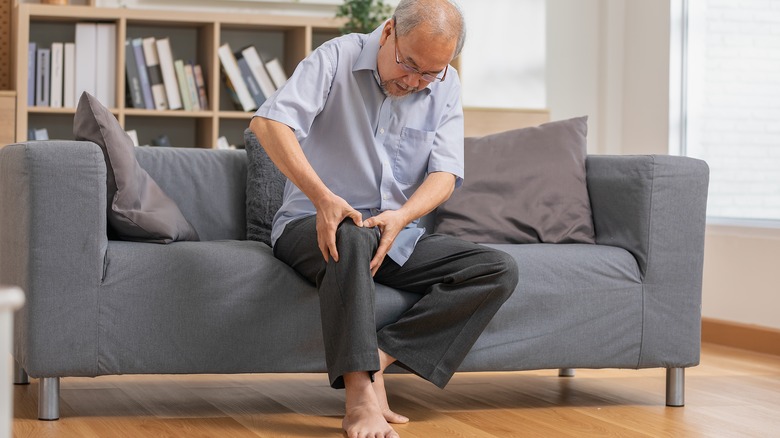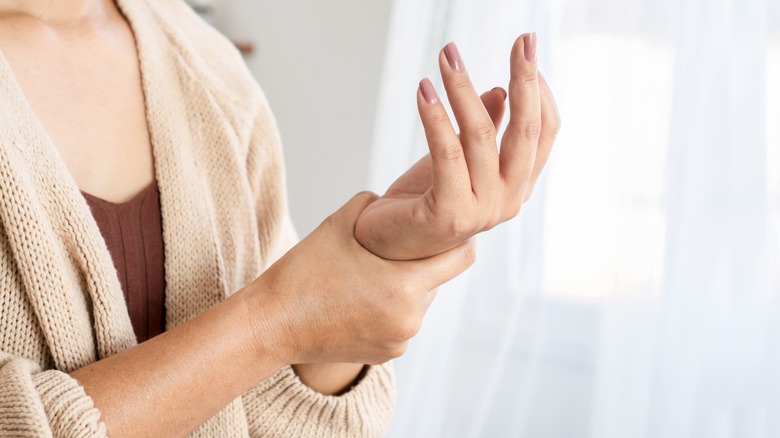Should You Be Concerned About Joints That Are Hot To The Touch?
Generally speaking, joints are an essential part of the skeletal system — they allow us to move, provide support to the body, connect bones, and facilitate mobility, enabling a wide range of movement, as reported via Nemours Teens Health. According to the source, different types of joints in the body include ball-and-socket, hinge, and pivot joints. Each has its own structure and function.
Joint pain – whether it's caused by injury or a health condition – can be a nightmare, severely impacting your daily activities, mobility, and quality of life. Conditions that affect your joints fall under the umbrella of musculoskeletal disorders. According to the World Health Organization, musculoskeletal disorders are a major cause of disability around the world. These conditions can affect the body's joints, bones, and connective tissues, ranging from acute injuries to chronic diseases like arthritis. If your joints are hot to the touch, this can be a symptom of various underlying conditions such as arthritis or injury.
What causes hot joints
According to Healthline, inflammatory conditions, such as rheumatoid arthritis (RA), and osteoarthritis (OA) can cause warm joints. While OA occurs when the cartilage between the joints begins to wear down, RA is an autoimmune disease that causes the immune system to attack healthy joint tissues, resulting in inflammation, pain, stiffness, and heat, per the Mayo Clinic. The inflammation can damage the joints and lead to joint deformity, bone erosion, and disability if left untreated. The exact cause of RA is unknown, but it is believed to be a combination of genetic and environmental factors. Women are more likely to develop RA than men, and the condition typically develops in middle age, although it can occur at any age.
Joint injuries can also cause heat and swelling in the affected joint. This is because injuries cause damage to the joint tissues, triggering an inflammatory response as the body attempts to heal the injury and repair the damaged tissue, per Medical News Today.
When to see your doctor
Healthline advises seeking help from a healthcare professional as soon as possible if you notice broken areas of skin or joint heat accompanied by chills, intense pain, and fever. In some rare cases, joint heat can be a symptom of an infection which could potentially lead to a condition called septic arthritis. In septic arthritis, bacteria, fungi, or a virus enters the joint and causes heat, pain, fever, and swelling, as reported via Johns Hopkins Medicine. The infection is more common in children although it can affect anyone.
It's always best to contact your doctor if your symptoms worsen. If rheumatoid arthritis is suspected, diagnostic tests may include imaging studies, such as X-rays, MRI scans, or ultrasound, to evaluate the joint and surrounding tissues for abnormalities, according to the Mayo Clinic. Blood tests may also be performed to look for signs of certain proteins or antibodies which might indicate inflammation.



